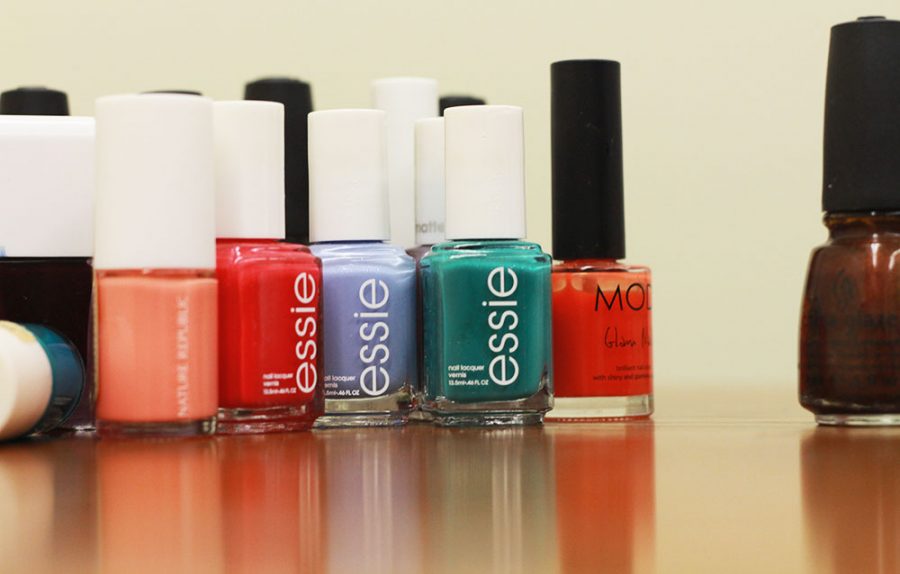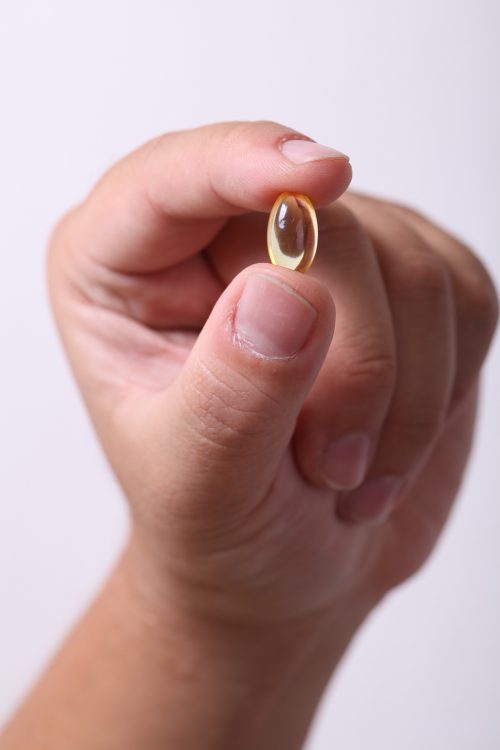Beauty is pain, as well as a hazard, according to a recent study by Duke University researchers, which revealed that using nail polish can be a substantial source of the chemical triphenyl phosphate (TPHP). Too much exposure to the chemical may cause problems in the endocrine and reproductive systems, as well as metabolic functions.
For example, the study stated that 21 days of TPHP exposure in zebrafish resulted in disrupted sex hormone balance and ability to reproduce. In humans, data shows changed thyroid hormone levels and lower semen quality.
For junior Morgan Kruse, whose nails are always painted, this is a disturbing find.
“I hope that companies plan to remove TPHP from their products as soon as possible,” Kruse said. “This is concerning and should not be happening.”
Dr. Bob Rice, an environmental toxicology professor at the University of California, Davis, said it’s important to consider the dose of TPHP that people get exposed to, and that one of the most difficult parts of estimating risk from exposure is determining how much is too much.
“Usually [the dose] is quite small, so the problems the chemical causes would be expected to be small. The effects of chronic dosing can accumulate and people differ a lot in sensitivity to chemical exposures,” Rice said. “Moreover, we are exposed to a myriad of different chemicals in small doses, and we need to worry about the cumulative effect.”
As far as nail polish is concerned, Karolina Boczek, a nail technician and the founder and editor of Your Nails Magazine based in Limerick, Ireland, said nail polish has been used for over 80 years without problems, and there is no worry involving long wear of any coatings on the nails as long as they are applied and removed properly. She argues that this study is just another “shocking” discovery trying to disturb a booming industry.
“I don’t see any reason why there should be a safer alternative [to nail polish],” Boczek said, “as there is no proof of this ingredient harming or damaging people’s health in the long run.”
Rice also mentioned that other chemicals found in nail polish are of similarly small concern. Acetone, for example, is usually tolerated well but some people who are more sensitive may react to inhalation with headaches, nausea and dizziness. In his personal experience, Rice has seen adverse reactions to nail polish, which is fortunately a rare response.
“Any well educated nail technician knows [acetone inhalation] is not a concern if the room is properly ventilated and all health and safety issues are properly handled,” Boczek said. “That is why wearing a mask and gloves is so important in this industry. If the room is properly ventilated all vapours are non-threatening to health.”
As far as taking action, Rice believes in order for change to happen, consumers should demand safer cosmetics. The solution makes sense — if nobody buys products containing TPHP, they will disappear from the market. Even if that does happen, however, the ordeal will likely be far from over.
Rice has a solution but knows that it is sure to upset much of the general population. He believes the need for wearing cosmetics is perceived and that they should not be used routinely. Although Rice said this view probably won’t prevail, lowering the use will reduce the problem considerably.
“One must be alert to the possibility that it will be replaced by another chemical as bad or worse. A second aspect is that many cosmetics contain harmful substances,” Rice said. “The public needs to demand better products, since the regulatory system does not ensure their safety. Some lipsticks contain lead, for example, in amounts high enough to be dangerous.”
Categories:
Threatening chemical found in nail polish
April 11, 2016
1
0
Tags:
More to Discover




















































































19JL01 • Mar 8, 2016 at 12:32 pm
This story is very eye opening and helpful to people who often paint their nails and should be aware of the safety hazards. While I don’t often paint my nails, I will definitely be more precautions and consider what I’m putting on myself the next time I decide to.